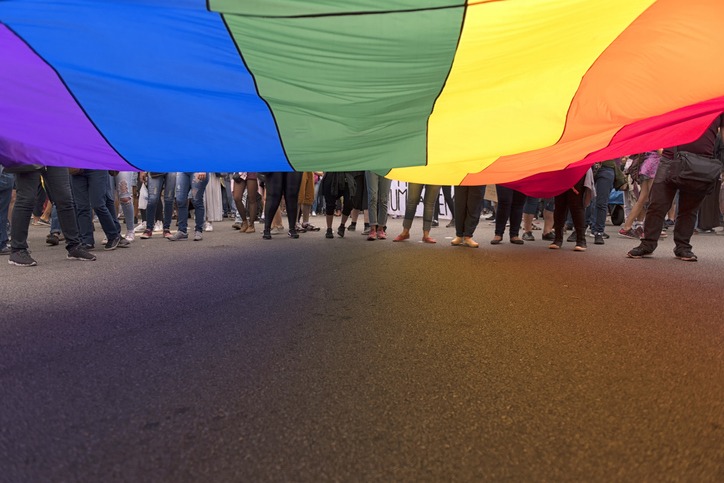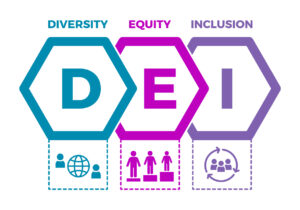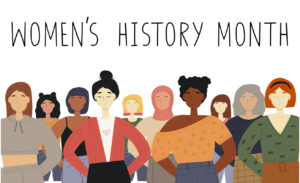How and why PR pros should consider their responsibility to tell LGBTQ stories
Trans activist Stephanie Battaligno challenges communicators to mirror the courage of young activists in demanding equality and justice for all.

Stories have power. They can reinforce stereotypes or break down barriers. They can celebrate the humanity in everyone—or they can legitimize cruelty and oppression.
It’s this heavy responsibility that underpins the main message of Stephanie Battaligno, a trans activist and author of the book “Reflections from Both Sides of the Glass Ceiling.” Her story is a remarkable one. As the first employee with New York Life to openly transition, she became an important voice for the LGBTQ community and for transgender inclusion in the workplace.

Stephanie Battaligno
Yet, finding her voice didn’t come naturally for Battaligno. She had used stories all her life, but to reinforce and defend an identity that felt wrong. “Telling a story had always been my default mode of communication. It was how I pursued human connection… it was how I got people to like me,” she shared with the audience at the Museum of Public Relations’ virtual event “The LGBTQ Experience in Public Relations” on June 29.
When she finally did start telling her authentic story, including her transition and coming out to colleagues, she asked herself what she could bring to the trans inclusion conversation. She offered two pieces of advice, shared by colleagues and mentors through her journey, to inspire other communicators to join the conversation:
- On asking “Is there room in the sandbox for me?” a friend told her: “Stephanie, it’s not a sandbox; it’s more like a beach.”
- When asking what she could do to make a difference, a trans activist replied: “All you have to do is tell your story.”
Stories building a movement
It’s the simple, sometimes revolutionary act of sharing your story that can make a big difference.
“There is immense power in our stories,” Battaligno said. “They truly can change hearts and minds. They connect us as human beings. They have the unique ability to tap into our shared humanity.”
And there is value in stories that might at first glance seem mundane or perhaps unremarkable. For example, the stories of allies can be incredibly powerful in advancing the goals of equality and justice for LGBTQ people, Battaligno said.
“These stories of love and support to the LGBTQ people in their lives create the space for others to step up and do the same. I’ve witnessed firsthand the power a parent’s love for the LGBTQ child can create.”
To describe how storytelling can build a social movement, Battaligno uses a metaphor of a serene mountain lake, where rain starts to fall. Each story, like a drop of rain, has a ripple that intersects with another ripple—eventually changing the surface of the lake itself.
“Think of yourselves as the drop of rain, and think of that ripple as the people in your circle that are closest to you,” Battaligno said. “If each of you does that in support of the LGBTQ community, particularly the trans community, the voices get louder, and one single drop becomes a movement.”
Allyship with a capital ‘A’
When allies proudly declare support, they send a strong message to colleagues, clients and the community at large that equality is a major priority—but Battaligno draws a distinction between meaningful and performative allyship.
“Are you and the company that you represent an ally with a capital ‘A’ or an ally with a small ‘a’?” she asks.
In her view, Capital “A” allies are:
- Visible
- Engaged in LGBTQ history and issues
- Ready to embrace teaching moments when they happen
Small “a” allies:
- Talk a big game
- Ignore LGBTQ issues once Pride Month is over
- Shy away rather than lean into the difficult conversation
The time is now
Battaligno finished her presentation with a strong call to action for communicators to use their platform to help LGBTQ and trans people right now.
“We are at an inflection point for the LGBTQ community,” she said. “We cannot fight this battle alone.”
To highlight the need for action on LGBTQ issues, Battaligno points to legislation that would bar trans athletes from competing in certain events, as well as efforts to prevent kids from pursuing gender-affirming health care treatment.
For communicators looking to make a difference for the LGBTQ community, Battaligno left her audience with some pointed questions:
- What is your responsibility as PR and comms pros to amplify LGBTQ voices and elevate these conversations?
- What will you do to mirror the courageousness of young trans activists who are combating the onslaught of mis- and disinformation attacking their very identity?
- What will you do to shape the narrative around equality and inclusion for LGBTQ persons everywhere, in your organizational culture and your wider communities?
It comes down to a very simple question, according to Battaligno: Will you tell your story? Communicators who are willing to take up the challenge, she says, have a perfect opportunity to make an enormous impact at a pivotal time for LGBTQ rights in the U.S. And, indeed, around the world.








Her problem and the problem of most who support a good cause like this: Why should people CARE?
Not what’s right or wrong, fair or unfair because—to most people asked to favor or buy something—a key question is WHY?
We can see that the appeal promoted in most ads is happiness. Sometimes it’s economy. . .or health. . .or prestige. But if we want more fairness for LGBTQ people, what’s the reward? What benefits can we promise?
We can promise that a better deal for LGBTQ people can make you feel good but will it? If so, will it be enough to motivate support for the cause? If not should we make a more motivating promise?
The need for “reason why” communication is not just for cause-supporters but for the rich and powerful. A full-page Philip Morris ad in today’s WSJ complains of “skewed and hyperbolic voices” of PM critics but even among people who know what “skewed and hyperbolic” means, would PM be more convincing to say that adversaries “are trying to sell you baloney” and then tell WHY it’s baloney and what BENEFIT we can get by not believing it but favoring the TRUTH?
Goodness of a cause isn’t an adequate substitute for goodness of communication persuasiveness. The LGBTQ cause is good and so is PM’s case for freedom to promote JUUL, and they will be more successful if they tell WHY it’s a good cause and HOW the public can benefit.
This is likely to work better than communication that is less persuasive, perhaps even communication that is skewed and hyperbolic.